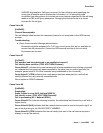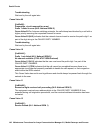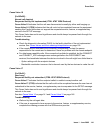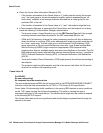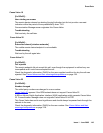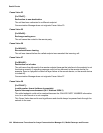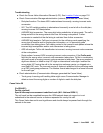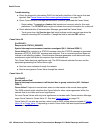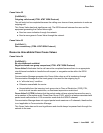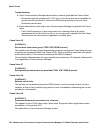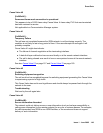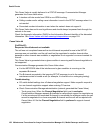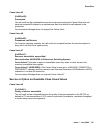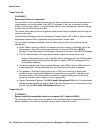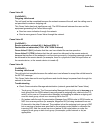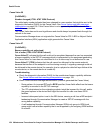
Event Data
Issue 1 June 2005 147
Cause Value 32
[0x20/0xA0] -
Outgoing calls barred (1TR6: AT&T ISDN Protocol)
The call could not be completed because the calling user does not have permission to make an
outgoing call.
This Cause Value has local significance only. The ISDN network between the user and the
equipment generating the Cause Value might:
● Send no cause indication through the network
● Send a more generic Cause Value through the network
Cause Value 33
[0x21/0xA1] -
User access busy (1TR6: AT&T ISDN Protocol)
Resource Unavailable Class Cause Values
Cause Value 34
[0x22/0xA2] -
No circuit/channel available/
Negative closed user group comparison (1TR6: AT&T ISDN Protocol)
Cause Value 34 indicates that he call cannot be completed because there is no appropriate
circuit/channel available to handle the call request, or congestion exists within the ISDN
network.
Communication Manager generates this Cause Value when a call is tandeming through
Communication Manager and the trunk group to be used for the outgoing leg is:
● In “all trunks busy” condition
● Otherwise unavailable for service
● Unreachable from the incoming trunk group due to Class of Restriction (COR), FRL,
trunk-to-trunk transfer restrictions, or disconnect supervision restrictions
Cause Value 34 (1TR6) indicates that the packet mode call was rejected because the user is
not a member of the remote end’s Closed User Group (CUG), which is a feature associated with
packet mode calls similar to X.25 connection made over the ISDN D-channel.
Communication Manager does not support packet mode sessions on D-channels, therefore this
is not applicable to Communication Manager.
This Cause Value has end-to-end significance and should always be passed back through the
network to the user.



